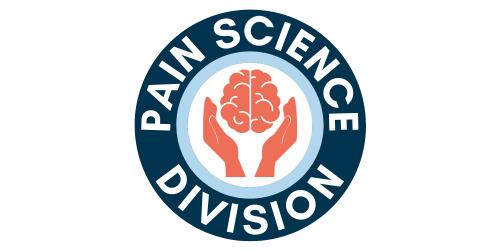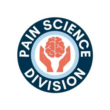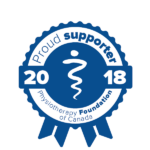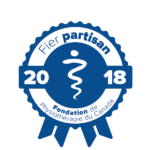A discussion with Keith Meldrum

Nathan: Could you start by providing us with a brief background about yourself?
Keith: My name is Keith Meldrum, I live in Kelowna, British Columbia. I am a Vice President with a civil construction company, and work as a civil engineer technologist. I have been living in Kelowna for 11 years, married, have an adult son and a dog named Parker. When I’m not working. I spend a lot of a lot of my time on advocacy for those that have persistent pain because I have been living with pain since a near fatal car accident in the 1980s.
Nathan: Can you tell us a bit more about the pain management advocacy efforts that you are involved with?
Keith: I really got started in the advocacy work back in 2011, when I first joined an organization in British Columbia called PainBC. It has grown to be a very leading organization for patient and pain advocacy, not only in BC, but throughout Canada. I initially got involved because of my own journey with pain, which led to a six-year term with the board, as the vice-chair of PainBC. After ending my term in 2018, I knew my advocacy efforts weren’t done, but I didn’t know what I wanted to do. I went off as a personal persistent pain advocate and started making contacts and reaching out to organizations. And they started reaching out to me as well. Since 2018, I’ve done a lot of work both in Canada and internationally. I presented to a number of pain education conferences in the US and became one of the founding members of GAPPA, a task force of the International Association for the Study of Pain. GAPPA stands for the Global Alliance of Partners for Pain Advocacy and is still a developing organization. And now I also do research with McGill – we published a paper last November, and we’re working on a grant for the next round of that research. And I just also co-authored a paper earlier this year with a team from University of Calgary, Stanford, and Harvard. I’ve really developed an interest in the research and enjoy doing that.
Nathan: What is the importance of research for advocacy?
Keith: I think it’s the most important thing. Over the last 10 years, there seems to be a shift in academia and even medicine. They are starting to try to understand pain a little differently and move away from just a biological model, or a biomechanical cause. However, research is missing an essential component: getting input and understanding from those that live with the disease. Whether it’s pain or if somebody has cancer or diabetes, it’s critically important to have the people who live with that disease, to help inform, educate, direct, and answer questions. I have been fortunate to be treated as an equal member of the research team and contribute as a co-author, as it should be done for participatory research.
Nathan: Can you tell us more about what advocacy looks like on a day-to-day basis?
Keith: It really depends on what I’m doing. Currently, most of my work is just done on my own as a personal pain advocate. It’s a matter of getting your name or your work out there. On my side, I have published a few articles and I used to post regular blogs. PainBC introduced me to the importance of using Twitter to share relevant messages. I didn’t know at the time, but there are subsets of Twitter (called med Twitter), where people share a tremendous amount of intellectual and scientific information. This is a key tool to raise awareness about your and get your word out there. Other than that, most of the work I am doing is presenting guest lecturing to university health students, whether it’s medicine or psychology, physiotherapy, and sharing the complexity of living with pain. I am also speaking at pain education conferences and interdisciplinary education sessions at the local pain clinic. The main focus of my talks is really about the storytelling. Having a story to tell is not enough, it has to be told in a way that people can relate to. Without that, it will be less effective in educating people if you get up there and talk about the challenges that you’ve faced. You need to be able to take those challenging times and turn them into teaching moments. For example, the things that were not done well for me in my healthcare journey are now the things that I speak about as opportunities to improve.
Nathan: How does one start advocating?
Keith: Personally, I started by reaching out to organizations because I had this need, this desire to share my experiences, but in a positive and useful way. More generally, it’s a matter of raising awareness through putting yourself out there, getting noticed and reaching out to organizations. For example, I have cold called organizations and said: “Hey, I see this is the work that you are doing, I would be happy to answer any questions or help” and let them get back to me. And there are not many people doing the work that I am doing, so other organizations are starting to look for people to help them out. For example, you see it in research where it is becoming mandatory to have someone with lived experience as part of the team when applying for funding.
Nathan: What would be some of the areas in pain management advocacy that you think are still unaddressed or not yet fully addressed?
Keith: Fundamentally, it comes back to understanding how complex pain is, at the system level. In fact, I would say any disease, but mine happens to be pain. Understanding that it’s not just biology or biomedical, that it affects every aspect of one’s life, that it’s not “all in your head” or psychological. It affects the totality of your life. It’s this “death by 1000 cuts” every day. My story is just like everybody’s. I don’t sleep well, I have pain every day. When I go out into the world, I put on a different persona because I don’t want to be the person presenting what my pain looks like every day. But when I come home, that’s where it all takes me. You carry it every day, a burden that just keeps weighing you down. And that affects your pain. So, it’s really a cyclical, circular relationship with your pain. And there’s still a large segment of healthcare that believes it’s purely biomedical. They can’t see it, image it or scan, so it can’t be real. They also believe that anybody who is seeking a sort of pain relief for health are exaggerating, that it can’t be that bad, that they are simply drug seeking.
Nathan: I think advocating for this change by making better research and sharing experiences is really important.
Keith: Yeah, but it’s tough. We are starting to see some change, especially compared to 10 years ago. We need to keep pushing and start to really try to understand this from the person who lives with it every day, and how we can then translate that back and get that knowledge into schools and research.
Nathan: What can we do on our side to help with pain management advocacy?
Keith: Taking the opportunity to be an educator and to talk about it with your colleagues. It’s important to better understand pain, but also to translate that knowledge back to your colleagues. Because when you see people in the clinic who have pain there, whether they’ve got the bulged disk or not, it’s not always just the biomechanical issue. It’s about exploring and understanding that they are human beings with stresses and issues, and how critically important that is to inform their pain. And I think that’s where there’s still a gap. While clinicians may understand that there are these other factors that influence pain, only a few understand that the things patients struggle with is the impact of pain in our lives.
Nathan: There’s almost this notion of helping others start questioning their approach, not necessarily telling them how to do it, but help them think that pain might be more complex than what it sounds like initially.
Keith: Exactly, I refer to that as “planting the seed”. And it’s similar for people living with pain. Some patients might have built-up anger against the healthcare system because they are caught up in thinking that there is something wrong that nobody has fixed, that clinicians have not tried hard enough. Both in clinicians and patients, you cannot simply flip the switch by saying “everything you have learned so far is wrong, here is what is right”. But you can plant the seed that, maybe, there is more to it. Here are some things to think about. And then let these seeds germinate and grow with them. Often, they will come back and start asking more questions or doing some reading on their own. This is when you will see change starting to happen. And this is where your role is important, to support patients and clinicians in navigating this new knowledge. It might not work for everyone, but I think it’s the most effective way overall. That’s how it happened to me. It was an unintended seed that was planted. And at first, I dismissed it. I thought it was a bunch of garbage and nobody knew what they were talking about. But you know, something caught my attention. And then over time it grew to where it was.
Nathan: Any closing words?
Keith: I really am truly excited to see this kind of work happening because advocacy is so important. If we don’t continue to talk about this, pain will never be fully understood because it is extremely complex. Most diseases are, but the challenge with pain is that it’s still not widely accepted in healthcare because it can’t be seen touched or imaged. You are dealing so much more with the person as a whole than just individual pathology. Having these conversations will drive the change forward.
Nathan: Some really powerful closing words!



